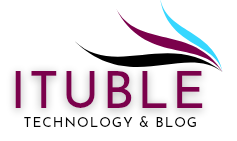Discovering the Legacy of the Rolleicord IA Model 3 Police Camera
The rolleicord ia model 3 police camera is more than just a vintage piece of photographic equipment—it’s a window into a unique blend of mechanical ingenuity, historic application, and classic design. Once used for professional and even official police documentation, this twin-lens reflex (TLR) camera holds a special place in both photography and law enforcement history.
A Brief History of the Rolleicord IA Series
The Rolleicord IA series was produced by the esteemed German manufacturer Franke & Heidecke, later known as Rollei, beginning in the mid-20th century. The IA Model 3, in particular, emerged around the early 1950s and became popular for its simplicity and reliability.
These cameras were more affordable alternatives to the professional-grade Rolleiflex but still offered sharp image quality and solid performance. The rolleicord ia model 3 police variation is believed to have been issued for law enforcement use, particularly in Europe, where photographic documentation was crucial for crime scene investigation and surveillance.
Distinction Between Regular and Police Models
While visually similar to standard models, police-issued Rolleicords may feature markings, engravings, or special serial numbers denoting their official use. Some collectors speculate these units came with accessories like leather cases or flashes suited for field work.
Design and Technical Features
The rolleicord ia model 3 police features a twin-lens reflex build that includes two lenses—one for taking photos and the other for viewing. This design provided a clear, waist-level viewfinder that was ideal for discreet documentation.
Key Specifications
- Film Format: 120 medium format
- Lens: Schneider-Kreuznach or Zeiss Triotar 75mm
- Shutter Speeds: B, 1s to 1/300s
- Focus Range: Manual focus with depth-of-field indicators
- Body: Sturdy metal with leatherette covering
For its time, this camera offered high-resolution imagery and a portable, rugged build—qualities appreciated in both civilian and official use.
Use in Law Enforcement and Surveillance
One of the most fascinating aspects of the rolleicord ia model 3 police is its potential deployment in police work. Photographic evidence is a powerful tool in any investigation, and during the 1950s and 60s, this TLR camera offered one of the best ways to capture scenes accurately.
Police departments reportedly used these cameras for tasks such as:
- Crime scene photography
- Mug shots
- Documenting stolen property
- Surveillance and undercover work
The waist-level viewfinder allowed officers to take photos without raising the camera to their face—perfect for unobtrusive image capture in sensitive situations.
Collectibility and Market Value Today
Vintage camera enthusiasts often seek out unique models like the rolleicord ia model 3 police due to their rarity and historical importance. While regular Rolleicords are relatively accessible on the used market, police-marked versions are more elusive.
What Determines Value?
- Condition of the lens and shutter
- Presence of original markings or accessories
- Provenance (e.g., documentation linking it to a police force)
- Functionality and completeness of the unit
Collectors prize these pieces not just for their camera capabilities but for the stories they tell—each one possibly used in solving crimes or preserving history.
Restoration and Practical Use in Modern Times
Despite being over 70 years old, many Rolleicord cameras are still operational today. Thanks to mechanical build quality and a lack of complex electronics, restoration is feasible for skilled technicians.
Photographers who enjoy analog shooting often appreciate the tactile experience and image character that TLRs like the rolleicord ia model 3 police provide. Film is still available, and results are often admired for their depth and richness.
Tips for Shooting with Vintage TLR Cameras
- Use a tripod for stability in low-light scenes
- Practice with the waist-level viewfinder before shooting in the field
- Keep the lens clean and protected
- Use light meters or smartphone apps for accurate exposure settings
FAQ Section
What year was the Rolleicord IA Model 3 released?
Around 1953–1954, during a key period of innovation in medium format photography.
How can you tell if a Rolleicord was used by police?
Look for unique serial markings or engraving. Some may include police department stamps or original carrying gear.
Is the Rolleicord IA Model 3 still usable today?
Yes, with 120 film still available and many repair experts around, it’s a functional piece of photographic history.
What lens does the Rolleicord IA Model 3 use?
Most models are equipped with a 75mm Schneider-Kreuznach or Zeiss Triotar lens.
Can I find this model on the market today?
Yes, but police versions are rarer. Check vintage camera shops, collector forums, and auction sites.
Conclusion
The rolleicord ia model 3 police is more than a vintage camera—it’s a functional artifact that bridges the worlds of analog photography and historical law enforcement. Its durable build, quality optics, and unique background make it a fascinating piece for collectors, photographers, and history buffs alike. Whether you’re drawn by its mechanical beauty or its storied past, this camera stands as a testament to the era when photography was tactile, deliberate, and essential to justice.







